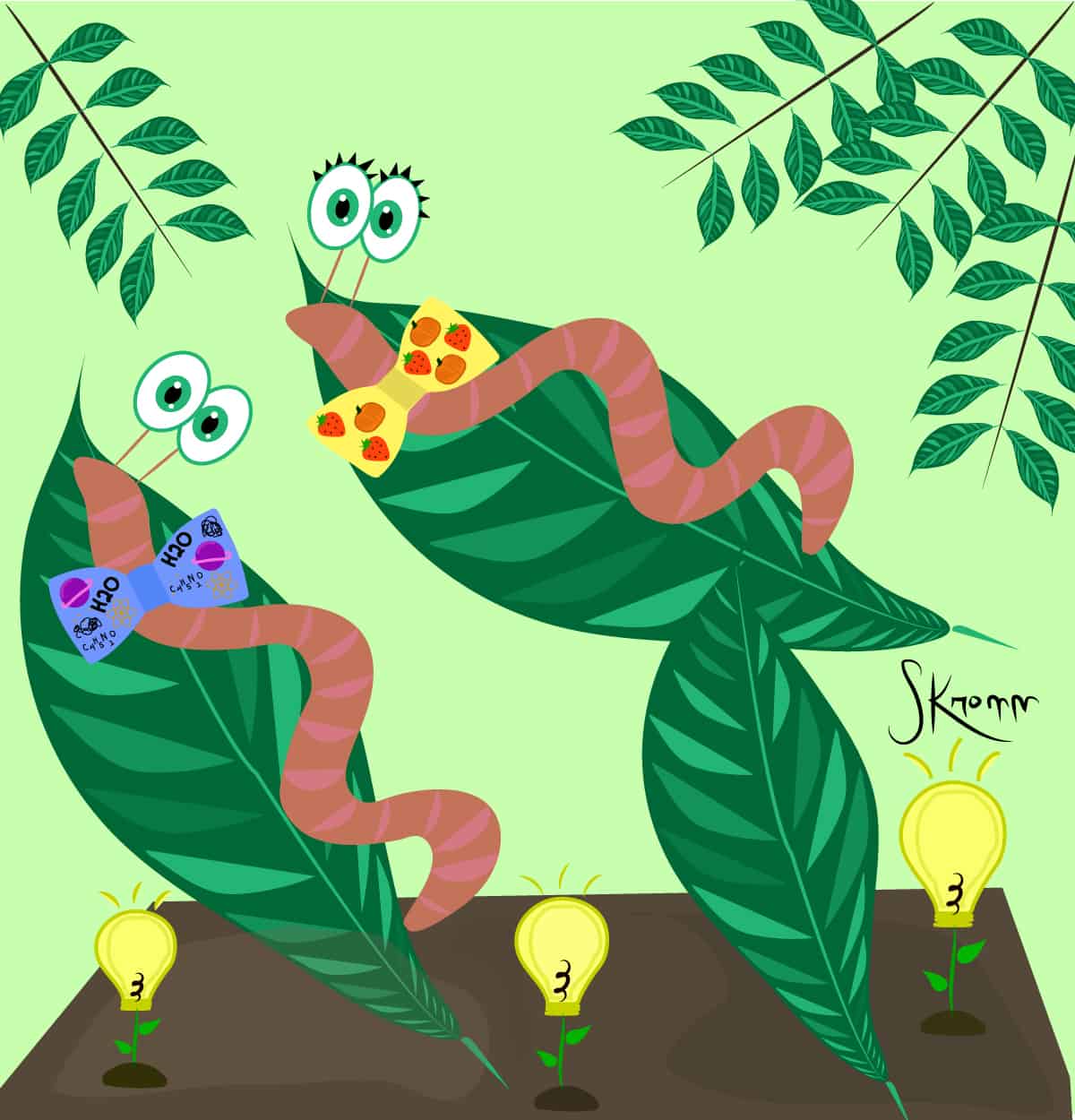Oskar Shura and Pawandeep Sandhu, recent graduates from the Department of Biology at UTM, investigated animal risk-taking behaviour in the common earthworm, Lumbricus terrestris.
“Having the background information in a simple invertebrate such as an earthworm could really provide us with information on how, or why, other organisms take risks, and how external factors (such as starvation) could influence these choices,” explained Shura in an email.
Their study, published in the Canadian Journal of Zoology, was carried out from September 2016 to April 2017 as part of BIO318, a year long research course at UTM that explores animal behaviour.
Shura and Sandhu worked under the mentorship of Cylita Guy, a PhD candidate in the Department of Ecology & Evolutionary Biology, and Rosalind L. Murray, a postdoctoral fellow in the Department of Biology. Cylita helped Shura and Sandhu shape the manuscript, while Murray provided her expertise for statistical analyses and supplementary data.
To explore the starvation-related trade-off with safety in Lumbricus terrestris, the authors manipulated the earthworm’s tendency to move away from light, a phenomenon known as negative phototaxis.
Earthworms prefer to live in predominantly moist and dark habitats, yet they are foragers that feed at the surface of the soil. This reaction to light is thought to be a defensive tactic against predators that may be active during dawn or daytime, or as a strategy to avoid dry soil, which may lead to desiccation and suffocation.
The association between starvation and risk was tested by defining movement toward light as risky behaviour.
The worms were divided into three groups: a non-starved group kept in high-nutrient compost and a starved group kept in low-nutrient potting soil for seven days prior to the experiment, as well as a group in a half-starved condition that was transferred from being in high-nutrient soil for four days to low-nutrient soil for three days prior to the experiment.
Worms from the groups at the three different stages of starvation were then individually placed in an arena where they could choose between a dark, low-nutrient environment or a bright, LED-lit, high-nutrient environment.
While there were no significant observed differences of choice and latency between the half-starved and starved worms, considering their general aversion to light, the starved and half-starved groups chose the nutrient-rich but lit environment at more than double the proportionality than the worms that were not starved.
Starved earthworms were more willing to ignore the bright environmental cue to danger when facing hunger as the alternative. They also made decisions more quickly; the starved groups took about half the time of non-starved worms when deciding between the two conditions.
The study highlighted “a cost-benefit trade-off between growth and survival,” when a hungry worm might choose to ignore the danger signs posed by a bright environment to benefit from the potential windfall gain of nutrition. There is a key balance between safety and hunger and its influence on the decision-making process in the worm.
The similarity to human behaviour is easy to see.
“You might be more likely to eat at a really sketchy food joint that you might get food poisoning from if it’s close rather than travel a really far distance to go to better food,” explained Guy.
Considering that species such as these earthworms are relatively understudied, the authors suggest that identifying behavioural similarity and differences between diverse evolutionary groups could benefit our understanding of biology and ecology.
According to Shura, studies that examine the behaviour or life history of the common earthworm Lumbricus terrestris, an invasive species, could be used to manage their population numbers in the future.
Shura and Sandhu presented their findings at the Canadian Society for Ecology & Evolution Meeting 2018 at the University of Guelph in July.
“To have our research critically evaluated by such experienced individuals like Cylita, Ros [Murray], our professors, and the editors, was truly such an honour,” said Shura.


